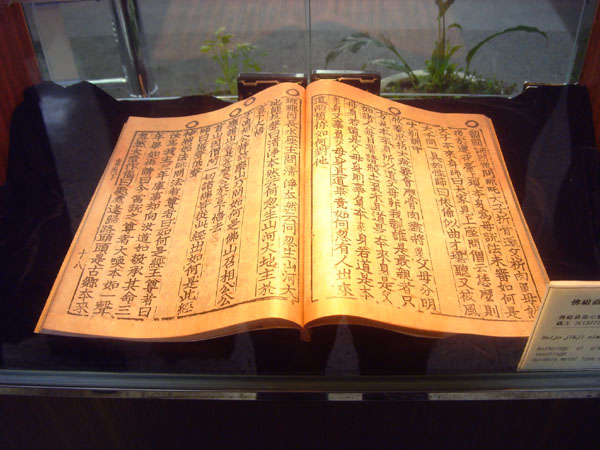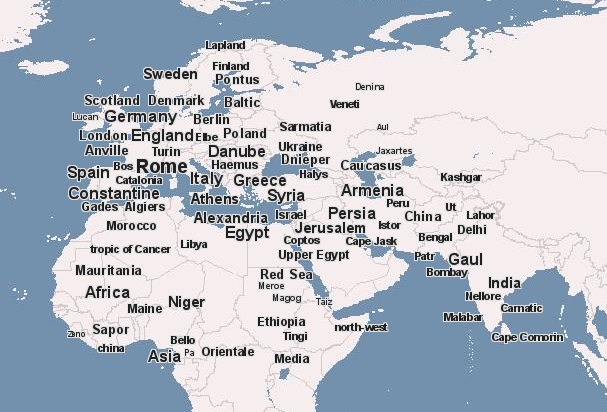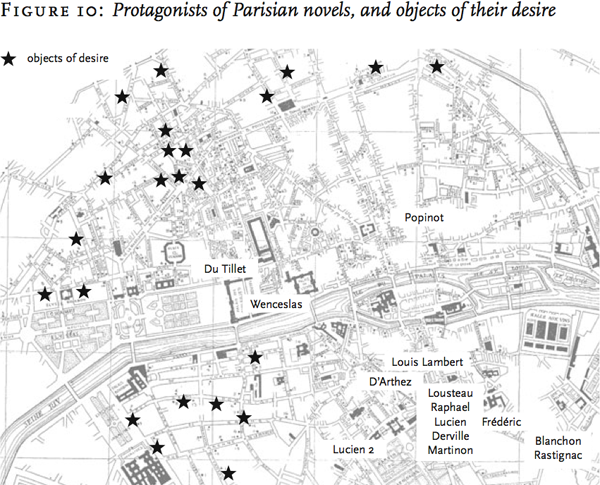
Check out, if you haven’t already, Paul Duguid’s witty and incisive exposé of the pitfalls of searching for Tristram Shandy in Google Book Search, an exercise which puts many of the inadequacies of the world’s leading digitization program into relief. By Duguid’s own admission, Lawrence Sterne’s legendary experimental novel is an idiosyncratic choice, but its many typographic and structural oddities make it a particularly useful lens through which to examine the challenges of migrating books successfully to the digital domain. This follows a similar examination Duguid carried out last year with the same text in Project Gutenberg, an experience which he said revealed the limitations of peer production in generating high quality digital editions (also see Dan’s own take on this in an older if:book post). This study focuses on the problems of inheritance as a mode of quality assurance, in this case the bequeathing of large authoritative collections by elite institutions to the Google digitization enterprise. Does simply digitizing these – ?books, imprimaturs and all – ?automatically result in an authoritative bibliographic resource?
Duguid’s suggests not. The process of migrating analog works to the digital environment in a way that respects the orginals but fully integrates them into the networked world is trickier than simply scanning and dumping into a database. The Shandy study shows in detail how Google’s ambition to organizing the world’s books and making them universally accessible and useful (to slightly adapt Google’s mission statement) is being carried out in a hasty, slipshod manner, leading to a serious deficit in quality in what could eventually become, for better or worse, the world’s library. Duguid is hardly the first to point this out, but the intense focus of his case study is valuable and serves as a useful counterpoint to the technoromantic visions of Google boosters such as Kevin Kelly, who predict a new electronic book culture liberated by search engines in which readers are free to find, remix and recombine texts in various ways. While this networked bibliotopia sounds attractive, it’s conceived primarily from the standpoint of technology and not well grounded in the particulars of books. What works as snappy Web2.0 buzz doesn’t necessarily hold up in practice.
As is so often the case, the devil is in the details, and it is precisely the details that Google seems to have overlooked, or rather sprinted past. Sloppy scanning and the blithe discarding of organizational and metadata schemes meticulously devised through centuries of librarianship, might indeed make the books “universally accessible” (or close to that) but the “and useful” part of the equation could go unrealized. As we build the future, it’s worth pondering what parts of the past we want to hold on to. It’s going to have to be a slower and more painstaking a process than Google (and, ironically, the partner libraries who have rushed headlong into these deals) might be prepared to undertake. Duguid:
The Google Books Project is no doubt an important, in many ways invaluable, project. It is also, on the brief evidence given here, a highly problematic one. Relying on the power of its search tools, Google has ignored elemental metadata, such as volume numbers. The quality of its scanning (and so we may presume its searching) is at times completely inadequate. The editions offered (by search or by sale) are, at best, regrettable. Curiously, this suggests to me that it may be Google’s technicians, and not librarians, who are the great romanticisers of the book. Google Books takes books as a storehouse of wisdom to be opened up with new tools. They fail to see what librarians know: books can be obtuse, obdurate, even obnoxious things. As a group, they don’t submit equally to a standard shelf, a standard scanner, or a standard ontology. Nor are their constraints overcome by scraping the text and developing search algorithms. Such strategies can undoubtedly be helpful, but in trying to do away with fairly simple constraints (like volumes), these strategies underestimate how a book’s rigidities are often simultaneously resources deeply implicated in the ways in which authors and publishers sought to create the content, meaning, and significance that Google now seeks to liberate. Even with some of the best search and scanning technology in the world behind you, it is unwise to ignore the bookish character of books. More generally, transferring any complex communicative artifacts between generations of technology is always likely to be more problematic than automatic.
Also take a look at Peter Brantley’s thoughts on Duguid:
Ultimately, whether or not Google Book Search is a useful tool will hinge in no small part on the ability of its engineers to provoke among themselves a more thorough, and less alchemic, appreciation for the materials they are attempting to transmute from paper to gold.


 Predicated on the “long tail” paradigm of sustained low-amplitude sales over time (known in book publishing as the backlist), these machines would, according to Epstein, replace the publishing system that has been in place since Gutenberg, eliminating the intermediate steps of bulk printing, warehousing, retail distribution, and reversing the recent trend of consolidation that has depleted print culture and turned book business into a blockbuster market.
Predicated on the “long tail” paradigm of sustained low-amplitude sales over time (known in book publishing as the backlist), these machines would, according to Epstein, replace the publishing system that has been in place since Gutenberg, eliminating the intermediate steps of bulk printing, warehousing, retail distribution, and reversing the recent trend of consolidation that has depleted print culture and turned book business into a blockbuster market.

